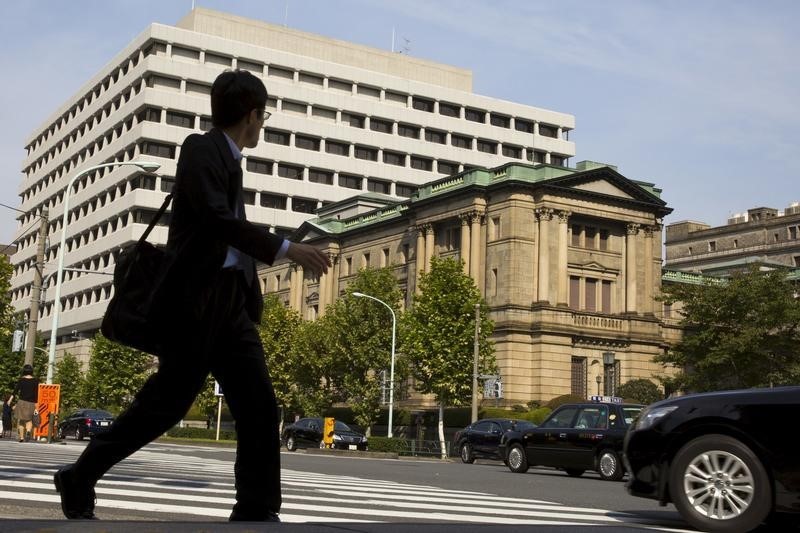By Leika Kihara
TOKYO (Reuters) - Many Bank of Japan policymakers complained of slow wage and capital expenditure growth but were optimistic that companies will start to boost spending once emerging economies improved, minutes of the BOJ's November rate review showed on Thursday.
Many in the nine-member board also agreed that the central bank shouldn't hesitate to expand its massive stimulus programme further if risks heightened enough to discourage firms from raising prices and wages, according to the minutes.
"Members shared the view that it was important for the rise in underlying trend inflation to be reflected in wages during spring wage hike negotiations" between companies and labour unions, the minutes showed.
The BOJ has kept policy steady since October last year, betting that companies will use their record profits to lift wages and capital expenditure and help kick off a positive economic cycle.
But repeated calls from premier Shinzo Abe and BOJ Governor Haruhiko Kuroda have so far failed to nudge companies into boosting wages and capital spending.
At the Nov. 18-19 rate review, the BOJ board discussed why companies were slow to respond.
A few said companies probably felt their current record profits were due to temporary factors like the weak yen and low energy costs, and weren't convinced that earnings would remain strong in the future, the minutes showed.
Others said companies were already gradually increasing capital spending and would continue to do so as the government's growth strategy bears fruit.
"Many members said firms were likely to become more proactive in spending on fixed investment and wages once emerging markets emerged from the doldrums, and domestic demand remained solid," according to the minutes.
A few members were also optimistic on the outlook for factory output, projecting a rebound in the October-December quarter as exports showed signs of life, the minutes showed.

Japan's economy dodged recession in the third quarter, offering a glimmer of hope for policymakers struggling to end years of stagnation.